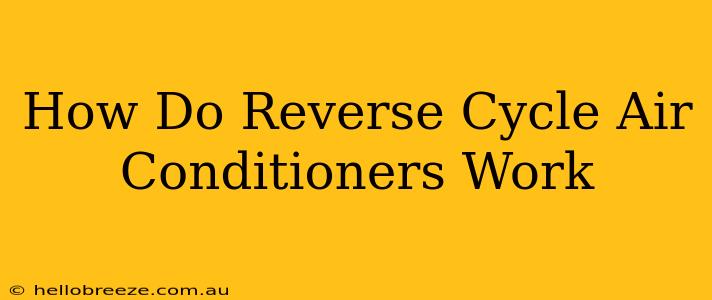Reverse cycle air conditioners, also known as heat pumps, are incredibly versatile and energy-efficient climate control systems. Unlike traditional air conditioners that only cool, reverse cycle units can both heat and cool your home, making them a popular choice for year-round comfort. But how do they achieve this remarkable feat? Let's delve into the mechanics.
Understanding the Refrigeration Cycle
At the heart of every reverse cycle air conditioner lies the refrigeration cycle. This is a closed-loop system using a refrigerant, a special fluid that easily transitions between liquid and gas states. The cycle involves four key components:
- Compressor: This powerful component compresses the refrigerant gas, raising its temperature and pressure significantly.
- Condenser: The high-pressure, high-temperature refrigerant gas flows through the condenser coils. Here, heat is released into the outside air, cooling the refrigerant back into a liquid state. This is the process that cools your home in summer.
- Expansion Valve: The liquid refrigerant then passes through an expansion valve, which dramatically reduces its pressure and temperature.
- Evaporator: The low-pressure, low-temperature refrigerant enters the evaporator coils. Here, it absorbs heat from the inside air, changing back into a gas. This process cools the air inside your home in summer and heats it in winter.
The "Reverse" in Reverse Cycle
The magic of a reverse cycle system lies in its ability to reverse this cycle. In cooling mode, the heat is absorbed from inside and released outside. In heating mode, the process is reversed:
Cooling Mode: Heat is absorbed from inside (evaporator), compressed (compressor), and released outside (condenser).
Heating Mode: Heat is absorbed from outside (evaporator), compressed (compressor), and released inside (condenser). The outside air, even on a cold day, still contains some heat, which the system efficiently extracts and transfers into your home.
Key Advantages of Reverse Cycle Air Conditioners
- Energy Efficiency: Reverse cycle systems are significantly more energy-efficient than traditional electric heating systems. They use less energy to produce the same amount of heating or cooling.
- Year-Round Comfort: Enjoy comfortable temperatures all year round with a single system – no need for separate heating and cooling units.
- Cost Savings: Lower energy bills and reduced maintenance costs can lead to significant long-term savings.
- Environmental Friendliness: Many modern refrigerants used in these systems are environmentally friendly and have a low global warming potential.
Choosing the Right System
The size and type of reverse cycle air conditioner you need will depend on several factors, including:
- The size of your home: Larger homes require more powerful units.
- Your climate: Units designed for colder climates are built to extract heat effectively even at low outside temperatures.
- Your budget: Prices vary depending on features and capacity.
Consider consulting a qualified HVAC professional to determine the best system for your specific needs. They can help you choose a unit that provides optimal performance and energy efficiency for your home. They can also advise on installation, maintenance, and energy-saving practices. Proper installation is crucial for efficient operation.
By understanding how reverse cycle air conditioners work, you can make an informed decision when selecting a climate control system for your home, ensuring comfort and cost savings for years to come.

